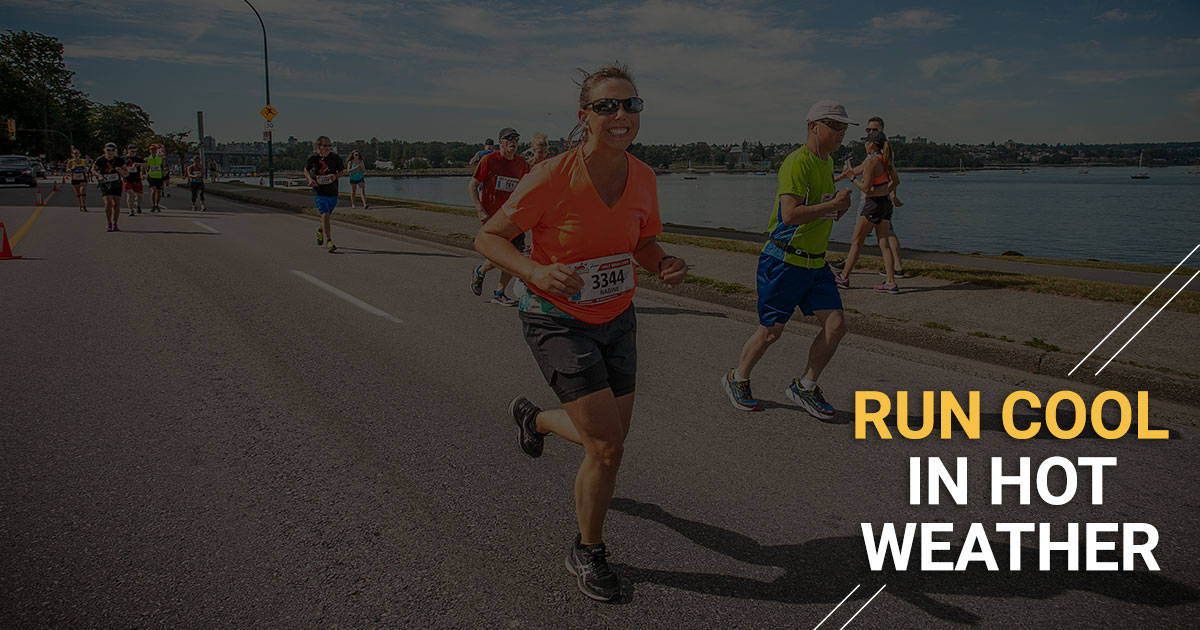
When summer hits, it’s important to take the heat into consideration when you’re planning your weekly runs/workouts. Fortunately the days are long so there are lots of options for putting the work in without suffering from the hot summer sun. Here are a few things to consider before heading out for your run:
Be timely:
The coolest temperatures are in the morning and evening when the sun isn’t high in the sky. The UV ray intensity is lower, and if you go in the morning there’s usually less people to dodge and it’ll boost your energy for the day! Depending on whether you’re an early bird or a night owl, find a time that works best for you.
Keep hydrated:
No matter what time of day you run at, be sure to hydrate before, during and after your run. Warmer temperatures require you to up your overall fluid intakes to keep your perspiration systems and temperature regulation in top form. Depending on your individual sweat rate, and how salty your sweat is will change what your replenishing needs are. Water may not be enough, so consider a sports drink or electrolyte supplement too. If you’re heading out for a long run, plan your route so there are water fountains or convenience stores where you quench your thirst throughout the run.
Protect your skin:
Harmful ultraviolet (UV) rays can cause skin damage, and can potentially lead to skin cancer especially in prolonged sun exposure. Slather on the sunscreen of SPF 30 or higher with both UVA and UBV protection to prevent sun burns, protect your skin, and keep your skin/body temperature lower. Your skin will thank you now and in the future!
Run cool:
Everyone has a go-to running route depending on their preference of terrain and scenery. If possible, when the weather heats up choose a loop that either runs past water, or through the forest. Bodies of water such as rivers, lakes and oceans tend to have breezier conditions that provide a slightly cooler environment. Sticking to the trails will not only provide extra shade from the tree cover, but the softer surface won’t retain or radiate heat as much as asphalt does.
Dress appropriately:
Running is a perfect time to break out the bright and light colours that most people’s everyday neutral wardrobes don’t have. Wearing dark colours or cottons is a sure-fire way to put yourself at risk of overheating; the dark colour absorb/attract the heat and cotton doesn’t have the best breathability. Instead, opt for light-coloured and loose fitting attire that reflects the sun’s rays away and allows the breeze to get through. Most athletic wear is now made of moisture-wicking synthetic fabric which helps to cool the body down, rather than the original cotton-tees that soak moisture up instead of wicking it away.
Always accessorize:
When fighting the heat don’t forget the value of a hat and sunglasses. Choose a hat with breathable mesh so that the heat loss from your head isn’t trapped in the cap, and protects your scalp from the sun’s rays. When grabbing sunglasses, don’t choose a trendy pair that don’t have proper UV protection. Make sure that the lens have both UVA and UVB protection to shield your eyes from harmful light.
Adjust expectations:
Before you acclimatize to the heat, adjust your training and paces to accommodate for the increased energy expenditure that running in the heat brings. It takes time to adjust to hot weather, so give yourself a couple of weeks to let you body adapt to the heat, especially if it hasn’t been given the gradual seasonal progression. Begin by doing easy runs a few times a week, then slowly build in workouts and remember to slow the pace down and run by feel. If you’re consistently running a minute slower per mile than normal but the effort is still there, understand that as long as the effort is there, the results will come!







